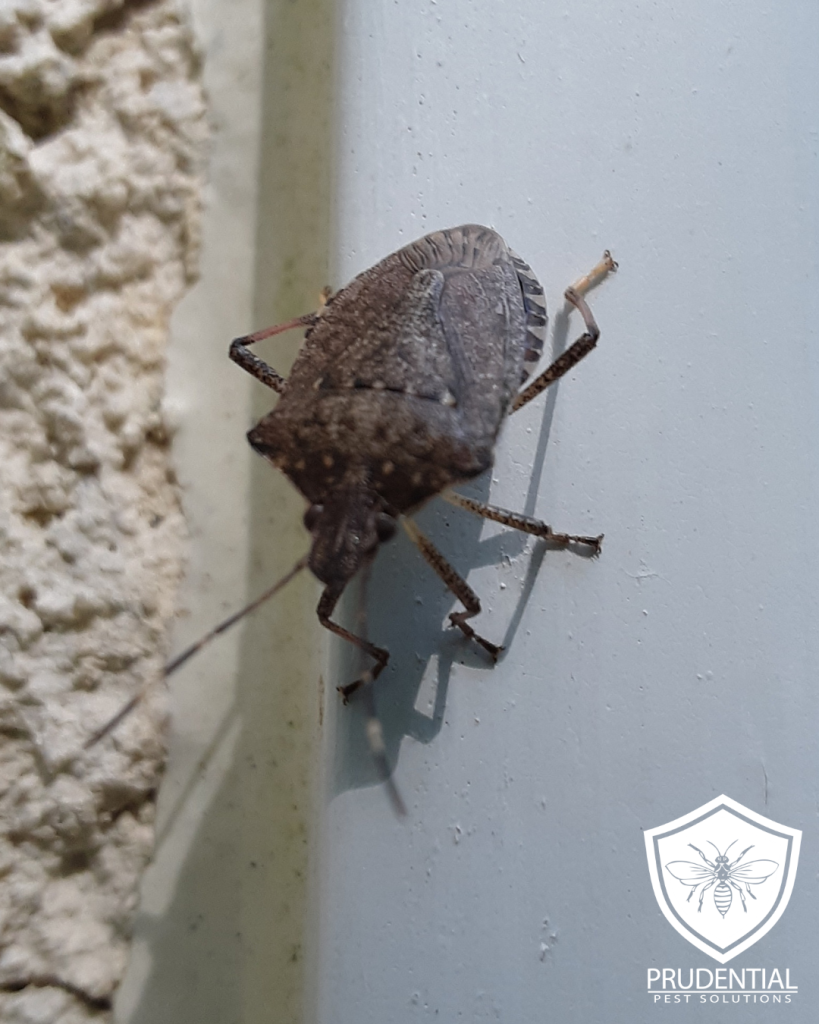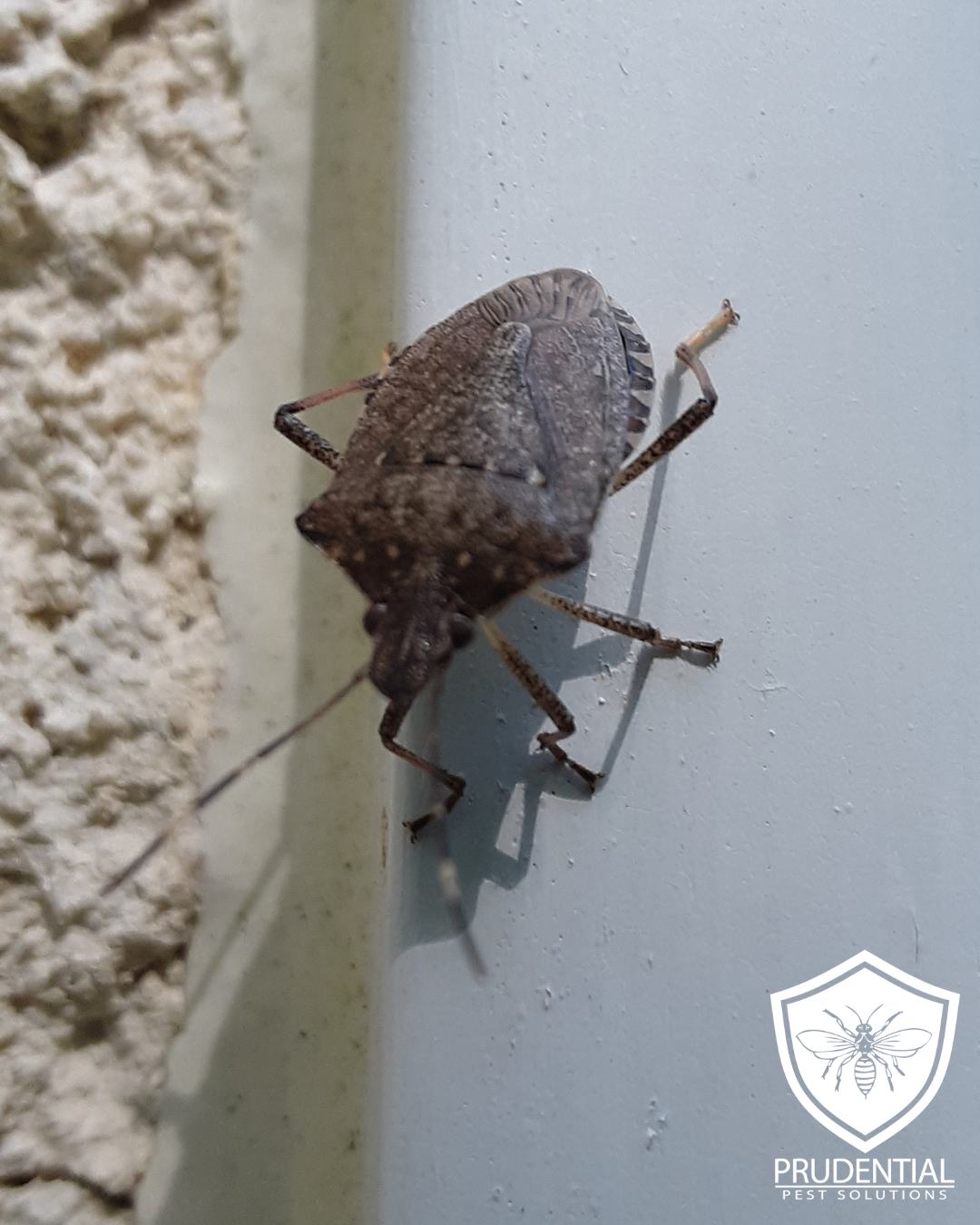Stink Bugs are an invasive species that can damage plants and be a nuisance to homeowners. Stink bug treatments are only effective if done properly and with knowledge of the biology and habits of the brown marmorated stink bug. In this article we will discuss the biology, treatment, and prevention of this invasive pest.
Stink Bug Biology
According to the Penn State Extension Office, the brown marmorated stink bug was introduced into the United States in 1998. Originally from Asia, the stink bug was accidently brought to Allentown Pennsylvania, which is less than an hour from our office! The stink bug is now found throughout all of Pennsylvania and most of the Eastern and Western areas of North America.
Stink bugs get their name from their scent glands they have on their body. If you’ve ever crushed a stink bug, you immediately recognize the odor.
Similar to bed bugs, stink bugs undergo 5 nymph stages from egg to adult. That is where the comparison to bed bugs ends because stink bugs feed exclusively on plants.
Stink Bug diet and plant damage
Stink bugs are considered true bug because they feed on plants. In Pennsylvania, some of the main sources of the stink bug include:
- Fruits such as peaches and apples
- Crops such as corn, beans, and tomatoes
- Ornamental plants and trees
- Weeds
The damage that stink bugs cause to plants and fruits include tissue damage to the plant and fruit, and scarring. This can result in the fruit being unable to be consumed or sold causing financial loss to the cultivator or simply frustration to the homeowner.
Can stink bugs harm humans?
Stink bugs do not have stingers or mouth parts that can harm a human. They can, however, cause allergic reactions to people that have sensitivities to the stink bug odor. The stink bug odor is actually a defense system and the chemical that causes the odor can affect people.
Stink Bug Treatments
For most people, stink bugs are more of a nuisance than a plant destroyer. This is because in the fall, when the weather cools down, the stink bugs try to enter homes in great numbers. In Pennsylvania, we often will see large numbers of stink bugs clinging to windows and sides of homes that get the most sun. As the weather cools, stink bugs will search out the warm sections of the house.
Just like in the fall, many homeowners will find stink bugs in the house over winter and into the spring. In the winter, stink bugs are moving around on the inside of the home or in the attic searching for warm areas to be. In the spring, the stink bugs are trying to get back outside where their food source is.
Stink bug treatments for your home
Treating and preventing stink bugs is a pretty simple process. The best method is to seal any openings or gaps around the outside of the home. This will prevent the stink bugs from entering the home. This is also easier said than done because most homes have many stink bug entrances around the outside.
Although sealing out the pests is always the best method, it is also not always as practical. We like to use a combination of sealing and a pesticide application to treat and prevent stink bugs.

Applying a pesticide for stink bugs involves applying the product to areas where stink bugs will hang out as well as enter the home.
The safety of the homeowners, pets, and the environment should always be a top priority when applying any pesticide.
Since stink bugs can enter the home higher off the ground, it may be best to contact a pest control professional to treat for the stink bugs. They have the equipment and training to successfully treat and eradicate stink bug infestations.
Stink bug treatments for your home
Prudential Pest Solutions is a full-service stink bug and pest control company. Our stink bug treatments will eradicate your problem and protect your home from these occasional invaders.


Comments are closed